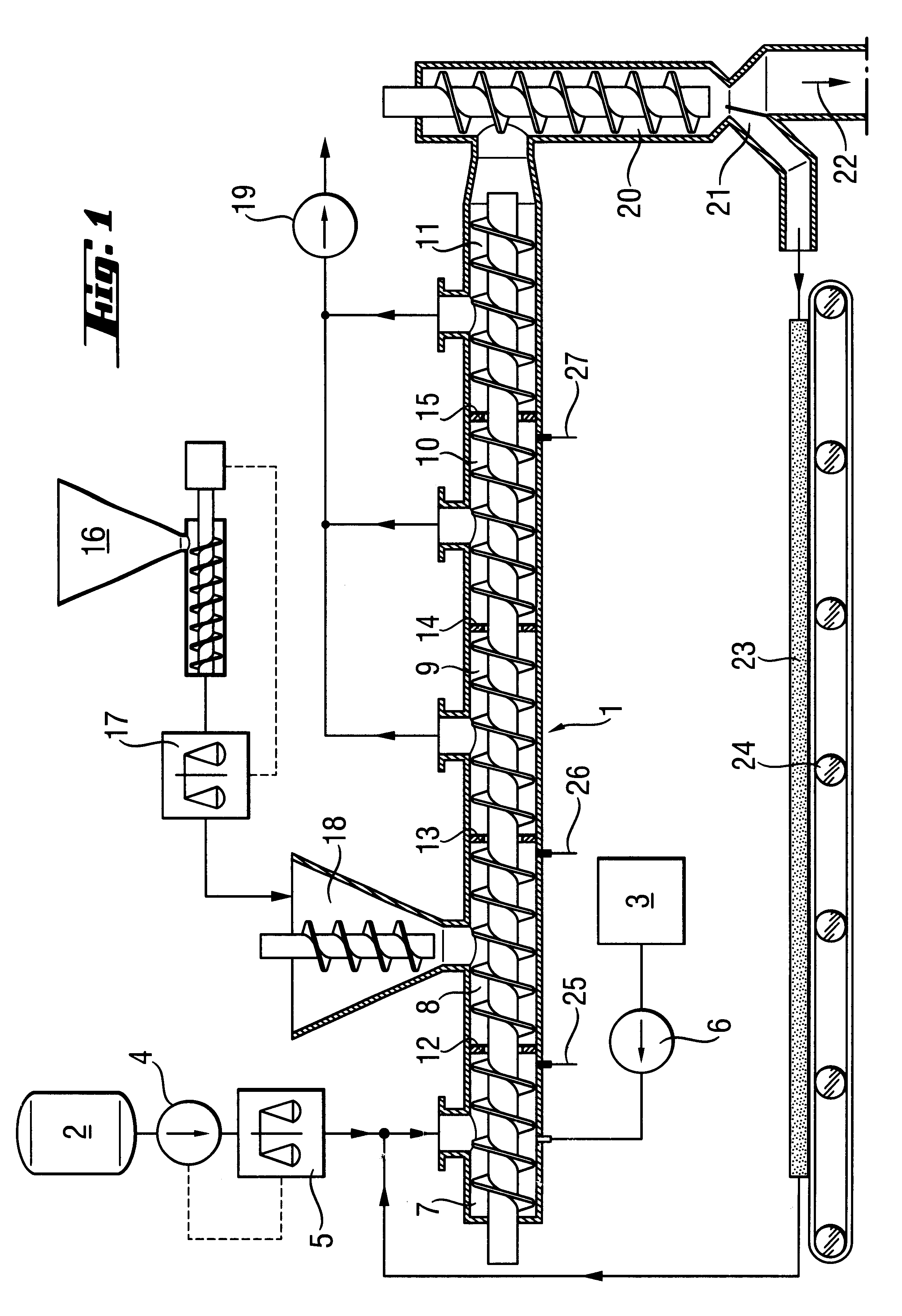Process for the continuous production of highly viscous filler-containing silicone compositions
a silicone composition and high viscosity technology, applied in the field of continuous production, can solve the problems of difficult dispersibility of relatively high proportions of finely divided solids in liquid polyorganosiloxane, difficult to achieve high dry friction, and difficult to achieve phase inversion (crumbling) rather easily
- Summary
- Abstract
- Description
- Claims
- Application Information
AI Technical Summary
Benefits of technology
Problems solved by technology
Method used
Image
Examples
example 1
In this Example, an Example according to the subject invention, a finished silicone rubber composition was co-fed with recirculation. Using the facilities shown in F1G. 1, 30 kg / h of the solid polymer and 5 kg / h of the plasticizer were fed into section (7) of the compounder. In section (8), 15 kg / h of FDS were metered in. The temperature of the silicone rubber composition at a screw rotation rate of 180 rpm was adjusted by heating / cooling the shaft and the individual sections of the barrel so that the temperatures measured at the measurement points (25), (26) and (27) were about 150.degree. C. / 200.degree. C. / 180.degree. C. The product stream downstream of the discharge screw was divided by means of a slit die (21) provided with a web, with 50 kg / h being discharged as unsieved silicone rubber composition (22) (=sample 1) and the remaining 16 kg / h (23) were returned to section (7) of the compounder by means of the conveyor belt (24).
example 2
In this Example, also a subject invention example, a finished silicone rubber composition was co-fed without recirculation. About 16 kg / h of a finished silicone rubber composition corresponding to the above-described formulation were metered pseudocontinuously in the form of rubber strips into section 1 of the compounder. Polymer and plasticizer metering were carried out as described under Example 1. The resulting mass flow of the silicone rubber composition discharged was 66 kg / h (=sample 2). A temperature profile comparable to that in the preceding experiment can be set by additional heating of zone 1 (7).
example 3
In this comparative example, not according to the invention, neither recirculation nor other additional introduction of silicone rubber composition into section 1 was carried out. The compounder was supplied with amounts of starting materials (HTV solid polymer, plasticizer, silica) corresponding to the formulation so that a throughput of 50 kg / h resulted (=sample 3). A temperature profile comparable to the Examples 1 and 2 according to the invention was set by means of appropriate heating / cooling of the barrel wall and shaft.
PUM
| Property | Measurement | Unit |
|---|---|---|
| Percent by mass | aaaaa | aaaaa |
| Percent by mass | aaaaa | aaaaa |
| Force | aaaaa | aaaaa |
Abstract
Description
Claims
Application Information
 Login to View More
Login to View More - R&D
- Intellectual Property
- Life Sciences
- Materials
- Tech Scout
- Unparalleled Data Quality
- Higher Quality Content
- 60% Fewer Hallucinations
Browse by: Latest US Patents, China's latest patents, Technical Efficacy Thesaurus, Application Domain, Technology Topic, Popular Technical Reports.
© 2025 PatSnap. All rights reserved.Legal|Privacy policy|Modern Slavery Act Transparency Statement|Sitemap|About US| Contact US: help@patsnap.com

